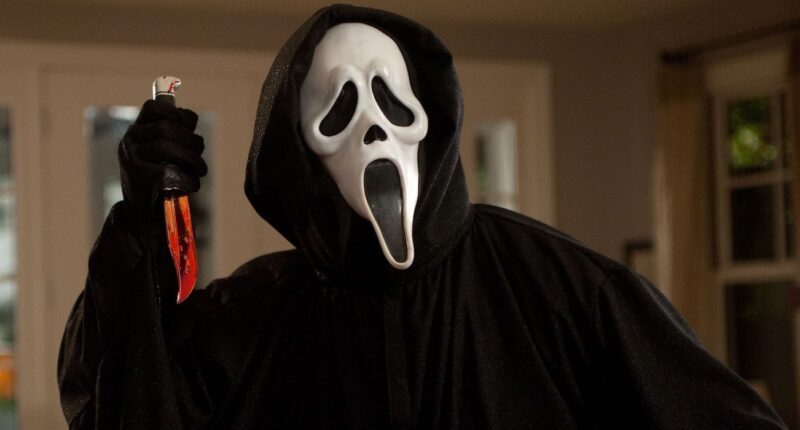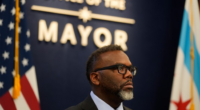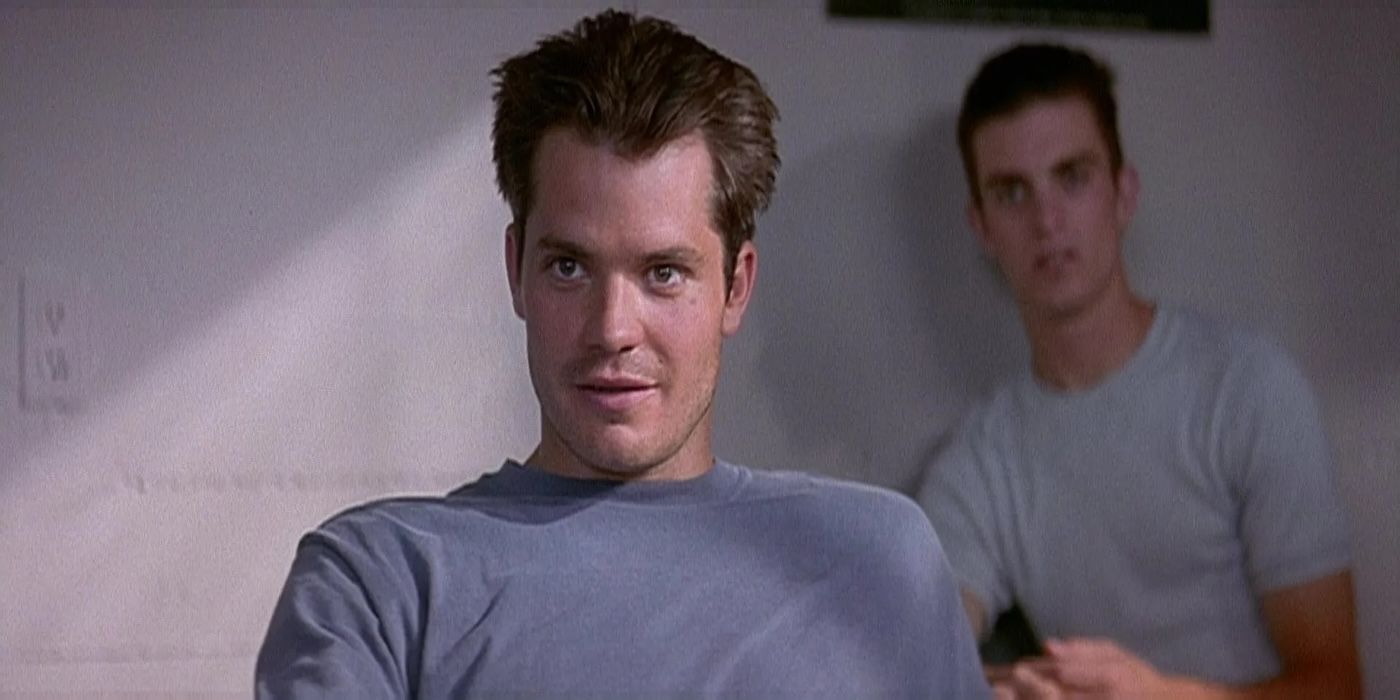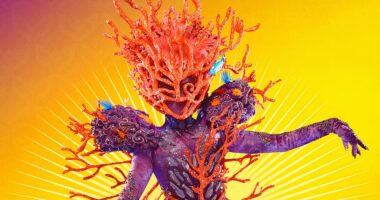There have been many faces behind the Ghostface mask, but none more prophetic, or more overlooked, than Timothy Olyphant’s Mickey Altieri. In Scream 2, Olyphant delivered a performance that was unhinged and disturbingly self-aware, yet he’s rarely mentioned alongside Billy Loomis (Skeet Ulrich), Jill Roberts (Emma Roberts), or even Roman Bridger (Scott Foley). That’s a mistake.
Mickey was the first Ghostface to fully embrace mass media as a motive, weaponizing the court of public opinion before true crime docs and Reddit threads made killers into celebrities. He was ahead of his time, and Olyphant played him with manic glee. What makes Mickey so chilling isn’t just his body count: it’s his ideology. He doesn’t want revenge. He wants to be famous. He turns murder into performance, laying the groundwork for every fame-hungry Ghostface who followed.
The Killer Who Foreshadowed the Scream Franchise’s Future
Olyphant captures it perfectly, teetering between film-student satire and genuine menace with a conviction that now feels eerily prophetic. Mickey Altieri isn’t just a footnote in Scream’s legacy—he’s the turning point. Long before streaming and social media turned killers into content, Mickey understood the power of spectacle. His obsession with fame reframed Ghostface not just as a killer but as cultural commentary. He didn’t want to get away with murder; he wanted the world to watch. In a franchise built on rules and reinvention, Mickey was the prototype for Ghostface as a brand. It’s time to stop treating him like a second-string slasher, for Mickey Altieri doesn’t just belong on the list of the most underrated Scream killers: he tops it. When Scream 2 hit theaters in 1997, the franchise was still riding the high of its meta-horror reinvention. The original Ghostface killers—Billy Loomis and Stu Macher (Matthew Lillard)—were cemented in pop culture as horror icons. Mickey Altieri took the role in a different, more forward-thinking direction, however; he wasn’t just killing for personal vengeance or out of sheer chaos. His motive was a cultural experiment: commit murder, get caught, and become infamous through the trial and media circus that followed.
It was a concept that felt extreme in the late ‘90s but today reads as a premonition. Mickey’s obsession with spectacle foreshadowed a wave of real-world killers whose notoriety outshone their crimes. Olyphant’s portrayal doesn’t just lean into this idea; he completely sells it. His intensity and theatrical monologues make Mickey feel like a man rehearsing for his big close-up, with every stab from his knife a potential scene in his twisted film.
The brilliance lies in how Olyphant balances horror with humor. Mickey isn’t a brooding villain; he’s practically buzzing with excitement at the bloodshed, and it’s that enthusiasm which makes him scarier, not softer, because he’s not weighed down by guilt or the fear of being caught. He’s enjoying himself.
How Olyphant Turned a Sequel Killer Into a Scene-Stealer
Even before he removes the mask, Olyphant plants seeds that Mickey is a little too invested in the meta-narrative of horror. He plays him as the kind of film student who can dissect slasher tropes in one breath and imagine starring in one in the next. When the mask does finally come off, it’s not a shocking break from his earlier persona: it’s the logical conclusion.
Olyphant moves with an unpredictable energy then, snapping between charming and feral in a way that keeps audiences off balance. His delivery of Mickey’s final monologues turns the cinematic confrontation into a showcase of weaponized charisma. This is where the performance transcends slasher fare. You’re not just watching a killer explain himself; you’re watching a man perform for an audience he believes is already watching at home. That’s why Mickey lingers in the mind long after Scream 2 ends. He’s not the kind of Ghostface you can simply write off as “the other guy” in the duo, but rather, the blueprint for what the killer could become when motives evolve beyond revenge and personal vendettas.
The Scream Franchise Still Lives in Mickey’s Shadow
Look at any Ghostface today, and you’ll see Mickey’s DNA everywhere. From Scream 4’s Jill Roberts seeking fame through survivor clout to the influencer-driven killers of Scream (2022), the idea of murder as a ticket to stardom has become a recurring theme. Mickey planted that seed, and Olyphant made it convincing enough to take root in the franchise’s identity. It’s also worth noting how much more relevant Mickey feels now than he did in 1997. In an era where crimes trend on TikTok before the facts are even clear, his “kill for the cameras” philosophy feels more and more like a documentary rather than satire. The Scream series thrives on its ability to adapt to new cultural fears, and in hindsight, Mickey was an early adaptation of a Ghostface who understood the media game better than anyone else.
Olyphant’s turn as Mickey deserves the same recognition as the franchise’s most celebrated villains. He wasn’t just a killer; he was a commentary on the culture that makes killers into icons. And he did it with such infectious, chaotic energy that even his most absurd lines feel like they could be placed into a viral headline today. If Scream is going to keep reinventing Ghostface for new generations, it should look back at the man who did it before it was cool. Olyphant’s Mickey defined Scream 2, and when we talk about the greats of the franchise, it’s past time he got his place at the top of the list.

Scream
- Release Date
-
December 20, 1996
- Runtime
-
112 minutes










